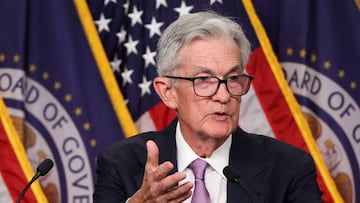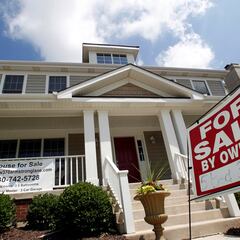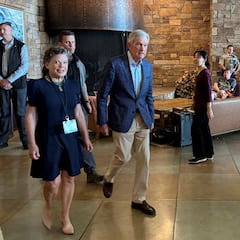Does the September rate cut by the FED mean a “soft landing” could be near?
The Federal Reserve surprised some with a larger rate cut than had been predicted as the economy slows. What does this mean for the desired “soft landing”?

After more than a year of maintaining interest rates at their highest level in 23 years, the Federal Reserve cut rates for the first time in four years this week. The move came as economic data showed inflation is approaching the central bank’s target of 2% while at the same time the labor market is cooling.
The size of the rate cut caught some by surprise with all the members of the Federal Open Market Committee (FOMC) except one opting for a 50-basis point reduction instead of a smaller 25-basis point cut. This is the first time since 2005 that the decision on interest rate policy wasn’t unanimous.
Does the September rate cut by the FED mean a “soft landing” could be near?
Policymakers are trying to meet their dual mandate of keeping prices stable while at the same time ensuring full employment. It’s still too early to tell whether the Fed will nail a “soft landing,” where they can get inflation down to their target without throwing the US economy into a recession and causing unemployment to spike.
“Our economy is strong overall and has made significant progress toward our goals over the past two years. The labor market has cooled from its formerly overheated state,” Fed Chair Jerome Powell said at a press conference after the FOMC meeting.
The S&P 500 climbed to a record high with Wall Street traders betting the Fed will be able to engineer a soft landing https://t.co/cSHTiFx7N9 pic.twitter.com/Nh35juYkrx
— Bloomberg Markets (@markets) September 19, 2024
Inflation has come down a long way from its peak of just over 9% in June 2022. Officials at the Fed predict that at the end of the year inflation will be at 2.6% and drop to 2.2% next year.
“We’re not saying ‘mission accomplished’ or anything like that, but I have to say, though, we’re encouraged by the progress that we have made,” Powell told reporters. “We believe, with an appropriate recalibration of our policy, that we can continue to see the economy growing and that will support the labor market.”
The labor market has continued to cool with new hirings averaging 116,000 a month over the past three months, “a notable stepdown from the pace seen earlier in the year,” Powell observed. But on a positive note he told reporters that “the labor market is not a source of elevated inflationary pressures.”
“Nominal wage growth has eased over the past year and the jobs-to-workers gap has narrowed,” said Powell. “A broad set of indicators suggests that conditions in the labor market are now less tight than just before the pandemic in 2019.”
Related stories
The current unemployment rate is 4.2%, and policymakers project that unemployment will rise to 4.4% at the end of the year. Even though that forecast is higher than what was predicted in June Powell said “anything in the low fours is really a good labor market,” adding that participation is “at pretty high levels, that’s a good thing.”
The Fed chair said that he doesn’t see anything in the economy currently that would suggest that the likelihood of a downturn is elevated. “The US economy is in good shape. It’s growing at a solid pace, inflation is coming down, the labor market is in a strong pace, we want to keep it there,” he said.



Complete your personal details to comment